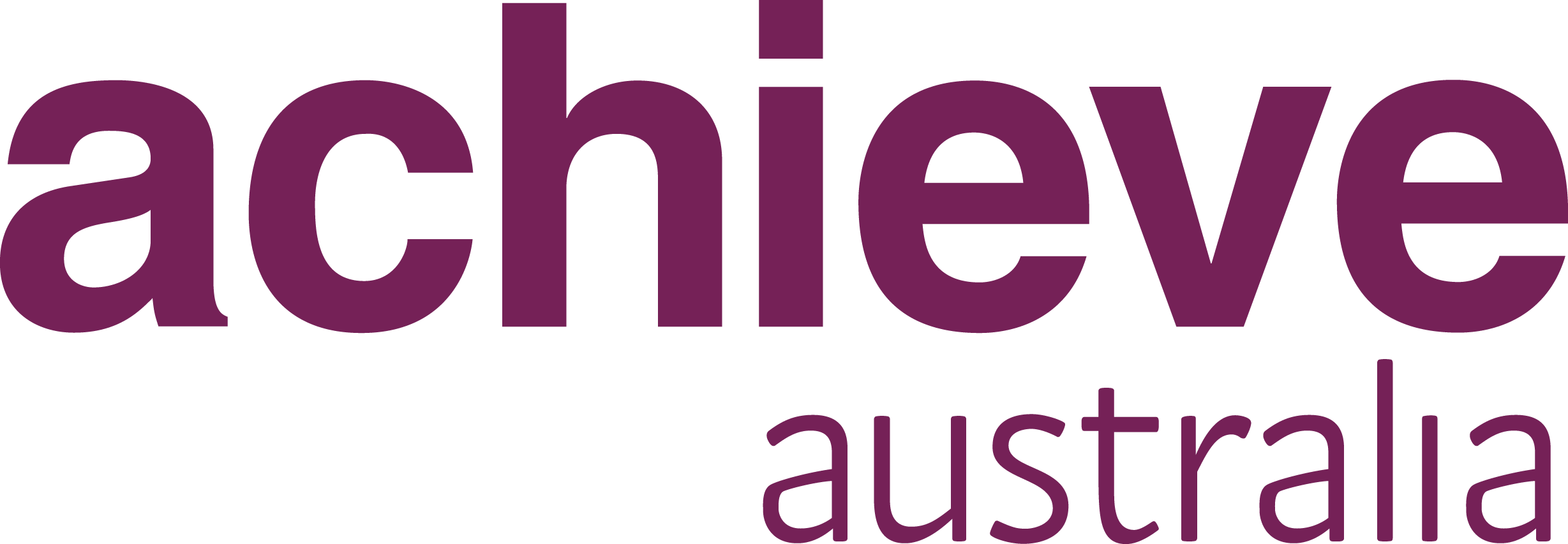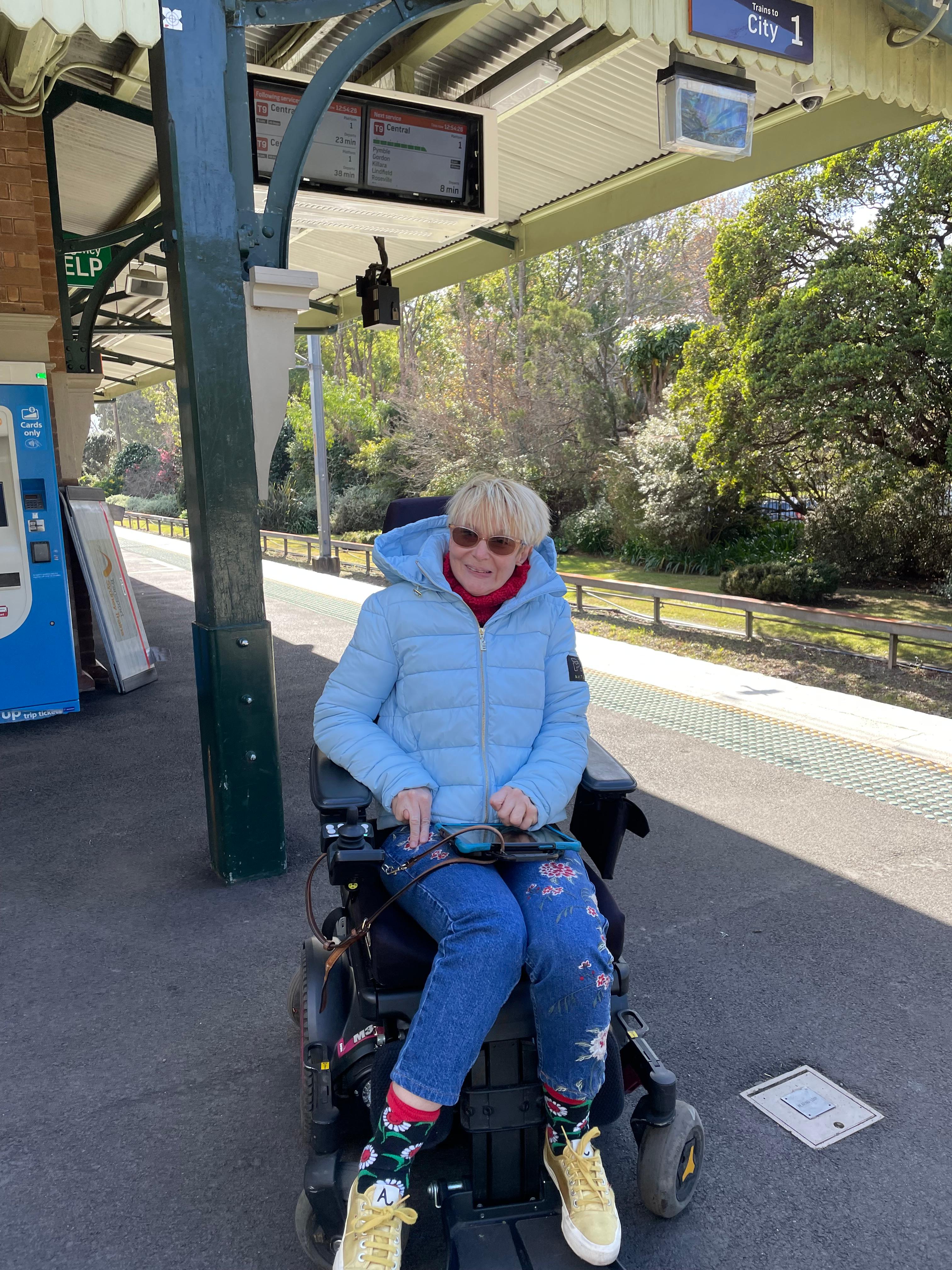By Fiona Bridger, Achieve Australia Researcher and Writer
27 July 2023
In my July blog, I delivered a pretty straight-talking assessment of public transport in Sydney.
I love that Sydney made the global list of top 10 most accessible cities and I applaud all the efforts NSW Transport and local government, especially Sydney City Council, have made but I don’t love stations with no lifts, train services cancelled due to track work and being forced to dig deep to pay for taxis and Ubers as an alternative.
I acknowledge that efforts to ensure PWD have equal access to Sydney, my beautiful city, are continuing. However, today, we still live in a time where my fellow PWDs and their friends and families can benefit from ‘Fiona Bridger's guide to public transport'. So here goes.
Useful tools and apps
Trip Planner
This is a great app to help you browse your options when planning your trip. The free app covers public transport by metro, train, bus, ferry, light rail, coach, taxi or rideshare. Use Trip Planner to:
• get real-time service information and view route maps
• save your favourite trips
• copy and share a link to your trip plan
• print a copy of your trip plan
• check for any out of service lifts, closures, and repairs.
Other useful tools and apps
I counted 15 different apps on the Transport NSW apps landing page. Well worth a browse. Apps are free and available from Apple App Store or Google Play. Interestingly, Trip Planner is not displayed so use the link above for that one. Here are just a few apps worth a quick mention:
Moovit - real-time data from Transport for NSW plus live info from the user community. It provides the fastest route, announces stops along the way and alerts you when your stop is approaching including a audio option. It also displays a countdown of stops along your route.
Feedback2Go – You can provide feedback to Transport NSW at anytime. Let us all use this one.
TripView - you can see metro routes and services and delays in real time.
AnyTrip - you can track public transport vehicles around you in real-time via a live map. It can also show upcoming departures from your favourite stops and stations.
Momego – also a trip adviser app but with 10 language options - English, Dutch, French, German, Italian, Japanese, Korean, Polish, Russian, and Simplified Chinese.
Tell me your favourite way to get around by leaving a comment below or on my blog is Sydney really that accessible?
Your one stop guide to public transport options
I wanted to curate information by type and experience but this page on the Transport NSW website covers a lot of ground – pun intended. It is a single web destination for browsing transport by type, concessions, travelling with assistance dogs and more.
City of Sydney funded the Accessible Sydney app and it is worth checking out. The council says it is upgrading existing facilities to improve accessibility to entrances, toilets, bathrooms, and the provision of lifts so let’s keep a watching brief and provide them with feedback.
Check out the council’s accessibility overview page.
Access Sydney Community Transport
Access Sydney Community Transport is a not-for-profit that started in 2015 to provide transport in 9 local government areas to PWD, older people and others for medical appointments, shopping, social outings and more. You will find a contact number of their site and the ability to sign up and stay across new services and updates. Pricing various depending on whether you are accessing the NDIS or something else so check the dedicated fees and pricing page.
Sydney trains
Transport NSW offers several accessibility features and services to people such as lifts to stations (although not all stations have lifts so do check), ramp access to trains and accessible loos.
The Access to trains page details useful phone numbers and links but let me offer a couple of shortcuts.
If you need assistance to get on or off a train, you can call 132232. To find information on where track work means a train service is unavailable or a lift is out of action, check Travel alerts.
Bus it
Sydney buses that are accessible have the wheelchair symbol displayed on the front of the bus. Most have inbuilt ramps these days making them easy to access.
Accessibility features include ramps that lower to road level for wheel chair users. On board there are wider doors, level floor in the front of the bus and seats that fold up to make way for a chair or scooter without jutting out into the aisle. There are also handrails, an accessible stop button and more.
Printed bus timetables show if a route is accessible via the wheelchair accessible symbol or the letter “a”.
Other people such as parents with prams can make use of some of these features but wheelchair users and people with limited mobility always have priority.
Read more on this page about bus travel on the Transport NSW website.
Sydney Ferries
All Sydney Ferries vessels are accessible to people using essential mobility aids, but several older-style wharves have steps that prevent access.
Planning an accessible trip with the Trip Planner will show you which services are accessible by displaying the wheelchair accessible symbol in your trip plan results.
You can also visit the accessible ferry travel page on the Transport NSW website.
Accessibility and private transport
Transport NSW has also put together a useful page for private transport operations with contact details for those that need to connect with privately owned transport after a train, bus or ferry ride.
Parking
PWD can apply for a disability parking sticker to allow them to park in designated disabled parking areas and spots. These stickers are also issued to the elderly who have issue with mobility challenges. Given that every 4th person in Australia has some form of disability and so a need for disabled parking, we need a lot more spaces designated to this large part of our society.
Know the rules
When using a mobility aid on public transport in NSW, it must comply with certain dimensions, manoeuvrability, and stability specifications. These specifications apply to manual and motorised wheelchairs, scooters, walking frames, and prams when using accessible services. Unfortunately, not all trains, buses, ferries, or coaches are accessible with a mobility device.
View Accessible Travel on Trip Planner to see accessible services to help plan your trip.
Understanding the big picture
The NSW Disability Inclusion Plan was created as a 2020-2025 “roadmap towards accessibility and inclusion” for people, customers, stakeholders and suppliers with disability.
It details the improvements needed for travel and accessibility for public areas for pwd. Under the plan, many useful apps and guides have been developed such as
Explore more topics
- Accessibility
- inclusion
- Achieve Australia
- disability
- belonging
- Community
- Employment
- The Sewing Basket
- disability employment
- Accessible
- Advocacy
- Celebrating people we support
- My Life My Say
- NDIS
- 2022
- Meet our Achievers
- blog
- people with disability
- travel
- women with disability
- Art
- Australia
- COVID-19
- Disability services
- Good nutrition
- Health tips
- Mental wellbeing
- NDS
- Sharing milestones
- Sydney
- achievable
- assistance dogs
- depression
- disability communications
- disability inclusion
- election
- employee of the year
- intellectual disability
- motherhood
- pregnancy
- social inclusion
- support workers

